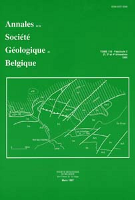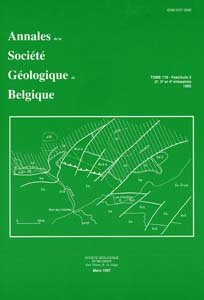- Accueil
- Publications spéciales = special publications
- La géologie de l'ingénieur - Centenaire de la Soci...
- Geological regularities of the development of landslides and rockfalls as the basis for the theory of their study and prognosis
Visualisation(s): 1053 (12 ULiège)
Téléchargement(s): 436 (2 ULiège)
Geological regularities of the development of landslides and rockfalls as the basis for the theory of their study and prognosis

Abstract
The problem of the study and prognosis of rockfalls and landslides with the goal of evaluating the stability of high slopes with a complex geological structure became more versatile and important than 10-15 years ago. It is due to a more extensive construction in mountain areas characterized by complicated geological conditions, increase in the class of structures, etc. Despite the progress in the elaboration of the theory of landslide and other gravitational processes and geological regularities of their development and improvement of research methods, new problems and requirements in structural design and engineering practice present themselves too quick for particular scientific-methodical efforts. A high natural slope is a complex geological unit with a long history of formation altering under the influence of natural and artificial factors. Because of this, traditional methods of rock mechanics are not applicable either to the study, or to the evaluation of the contemporary stability of high slopes of a complex structure. Methods of field and experimental investigations in regions affected by landslides and/or rockfalls should be those of engineering geology and proceed from the structure and history of formation of a slope as a whole, rather than of a particular landslide.
Evaluation of general and local, long-term and contemporary slope activity as well as prognosing of landslides and rockfalls in critical cases and at detailed stages of investigations call for combination of various methods: comparative-geological ones, those of modelling and of calculation (primarily those of final elements) which mutually check one another. For rough estimates of stability and prognoses it is admissible to use a single method, but the comparative-geological analysis is always indispensable. A successful application of methods of modelling and calculations of the state of stress in rocks and stability of slopes of a complex geological structure with the use of computers is possible only if engineering-geological study of high natural slopes is comprehensive and takes account of all main factors and elements.
It is impossible to work out substantiated engineering-geological and geotechnical models for carrying out experimental work and calculations of the state of stress and stability of high slopes with a complex structure by new methods without previous elucidation of the main geological regularities and factors of the initiation of landslides and rockfalls of various types, volumes and mechanisms of their development. If this fundamental thesis is neglected and simplified schemes are used for calculations and modelling due to the lack of data or deep insight into the main geological regularities of the structure and development of landslides and a slope as a whole, then the application of new experimental devices and computers will result in great mistakes rather than advantages with a seeming use of present-day methods of investigation.
The main geological regularities of the development of landslides and processes related to them are also of importance for grounding combined measures and the sequence of their carrying out with the aim of controlling landslides and rockfalls and general strengthening of slopes.






